What Do Fireflies Eat? | All About Fireflies
Think back to those warm summer nights you spent in New England when you were a child. If you were anything like me, you devoted at least a few of those evenings to chasing fireflies around your backyard, glass jar in hand. For a lot of people, the blinking lights of fireflies are just as much a part of the classic summer nighttime scene as the chirping of crickets, the calling of katydids, or the buzzing of mosquitoes (as much as we wish that last one wasn’t). Most of us have probably only crossed paths with fireflies during the evening hours, when our lives briefly overlap, but this means that the rest of a firefly’s life, despite it being among the most famous and well-liked insects, is largely shrouded in mystery. So when fireflies aren’t flying around and showing off their luminance, what are they doing? Where do they go during the day? What do fireflies eat? What do they even look like when they’re not a blinking yellow-green light?
Below, you’ll find the enlightening answers to all of these common firefly questions.
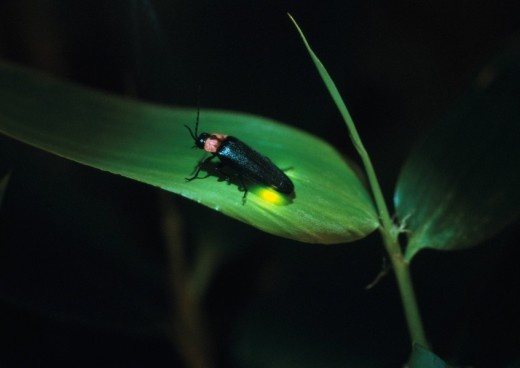
What Do Fireflies Eat | All About Fireflies
What Are Fireflies?
Fireflies (or “lightning bugs”) are a family of beetles known for their ability to produce light. Through the use of specialized organs in their abdomens, they’re able to set off chemical reactions that result in a blinking or glowing light. This process is commonly known as bioluminescence and can be found in anything from fish to fungi.
Some fireflies blink their lights on and off in fancy patterns, others just emit a steady glow, and some can’t do either of those things. In fact, despite their common name, many firefly species are unable to produce any light at all.
Why Do Fireflies Light Up?
The reason why only some fireflies light up all comes down to—like most things in life—attracting a mate. Some species of fireflies evolved to use blinking or glowing lights to find a breeding partner, while others evolved to use invisible chemical signals (pheromones) instead. For the light-up species, the male will fly around and blink his lights in a certain, species-specific pattern—like a love song in Morse code. He’s trying to catch the eye of a female firefly, who he hopes will blink her own light in response from somewhere nearby.
When most people encounter them, fireflies are fully-grown, flying beetles, but they begin life in quite a different state. They start out as eggs in the ground and then quickly grow into larvae (sometimes called glowworms), which can spend up to several years underground. In the spring, the larvae turn into pupae and, subsequently, adult beetles.
Unlike their mature counterparts, all firefly larvae have the ability to glow. However, the larvae’s glowing doesn’t serve the same purpose that it does in adults: in larvae, glowing is instead used as a warning for predators. Hungry animals that eat a firefly larva soon come to regret their meal—a special chemical found in most firefly blood gives off a very foul taste. Predators learn to associate this bad taste with the firefly’s luminance and next time look elsewhere for a quick bite to eat.
What Do Fireflies Eat?
In their larval stage, fireflies are carnivorous. They eat soft-bodied insects that live on or in the ground, like snails, slugs, worms, or other larvae.
As they mature and turn into beetles, they do one of several things, depending on which species of firefly they are. Some fireflies eat the nectar or pollen of flowers, others eat smaller fireflies, and some don’t eat anything at all. This is due to the adult firefly’s relatively short lifespan, which is typically no more than a few months long and is normally spent looking for a mate.
Fireflies of the genus Photuris are especially devious when it comes to feeding. Females will lure in males of other species by mimicking their blinking patterns, so the hapless males fly over to the females in hopes of procreation, but are instead greeted by predation. This behavior has earned these particular lightning bugs the nickname “femme fatale fireflies.”
Where Do Fireflies Go During the Day?
Although most fireflies come out only at night, many species are active exclusively during the day. These species spend the daylight hours breeding and eating, while their nocturnal counterparts rest in fields or wooded areas until after dusk. Due to the brightness of the sun during the day, most diurnal fireflies have abandoned the ability to glow and instead use pheromones to attract their mates.
If you feel like you’ve been seeing fewer and fewer fireflies over the years, you’re not alone. They were once a very common sight throughout New England, but today, they’re more difficult to find. It’s hard to say for sure what has caused this decrease in the firefly population, but experts theorize that it could be due to pesticide use, habitat loss, or light pollution.
Hopefully, your most pressing firefly questions have now been answered. With your new-found appreciation for these glowing insects, you may be interested in signing up for Mass Audubon’s Firefly Watch Citizen Science Project. The program allows you to report your own firefly sightings online, which helps scientists track firefly populations across New England and hopefully determine the cause of their troubling decline.
Did you ever wonder “What do fireflies eat?” or “Why do fireflies glow?” Let us know!
This post was first published in 2016 and has been updated.
SEE MORE:
What Do Ladybugs Eat? | All About Ladybugs
June Bugs | The Blunderers of June
Greenhead Flies | What Are Greenheads?
Related Articles
In the 1950’s, living in the southern part of Sao Paulo, Brazil, my sister and I used to chase the fireflies. We would admire the beauty of the light and release them….now living in Connecticut I have seem them in my backyard. This July 2021 I saw five fireflies…what a treat. S.M.
I wish my little sister caught a Firefly and put it in a jar. I want to research a fireflies are a herbivore or a carnivore. I saw this article and I read it but they didn’t say if fireflies are car carnivorous or her are herbivores. I’m a little disappointed but it was a good article it was super good and I really liked it.
I LIVE IN THUNDER BAY ONTARIO, I SAW TWO FIRE FILES TWO DAYS AGO AND TONIGHT I SAW ONE. I SURE HOPE I GET TO SEE MORE.
Hello!I am from India. Was trying to figure out why fire flies are almost not seen in the places where they were once abundant. Was thinking of excess use of pesticides . However I was not sure of their food. Was searching what they eat and found the answer in this article
Thank you
The article suggests that there maybe fewer fireflies nowadays than in the past because of things like increased use of pesticides and herbicides. I’m 76 years old and my impression is the opposite. In fact I don’t remember actually noticing fireflies at all when I was a child, although I heard plenty about them. We lived in a woodsy, country-like setting then. Every evening there were swarms of June bugs and other things associated with dusk, and plenty of moths swarming around our porch lights and plenty of mosquitoes and I was aware of those, but fireflies were only something I read about in books or learned about in school. Is it possible that there are more (or fewer) fireflies because of weather patterns? A humid summer versus a dry one, for example. I have an open (not screened) back porch on my house and for 27 years I have spent a lot of time relaxing out there at the end of the day as dusk appears and then darkness. I’m quite sure that for the past five years or so there have been more fireflies than ever before. Perhaps there were predators that used to eat most of the fireflies and those predators have grown more rare? By the way, I now live in a thickly populated city in Michigan, not out in the country. There have been changes over the years, such as large, covered trash bins that are picked up regularly and no longer are there plastic bags of garbage in people’s garages and back yards just waiting for raccoons to tear them open. The open trash bags and the raccoons are now gone, so maybe predatory insects that used to devour fireflies are no more because their own breeding grounds have diminished? I know that 30 years ago the neighborhood I live in was full of raccoons being destructive every night, and those are now extinct here–with no garbage bags for them to tear into. In any case it is certainly my experience that fireflies are much more noticeable today than they were in the past–at least here in Michigan.
A friend told me that firefly larva are corn rootworms and damage corn crops. Is this true?
This article certainly DID answer my questions about fireflies! Growing up in Darien, CT, when we saw lightning bugs it meant for sure it was summer! Now living in Annapolis, MD – don’t have a sighting report yet.
Excellent article.
Just to let you know, we still have a fair population down in the Caribbean (St Lucia in particular ) .. but unfortunately, there has been a decline in the regularity of sightings (en masse) as well.
Growing up in Anniston, AL, in the 50s, we certainly had & enjoyed fireflies. A friend of mine once caught a jar full, smuggled them into a local movie theater, unscrewed the top, set them on the floor – & let them enjoy the movie! Not sure the management thought that was so funny…
I live in coastal Fairfield county, CT. This year there seems to be an overabundance of fireflies in my yard. I see them much during the day in my garden and then at dusk they put on a show that looks like a reverse shower of light from the lawn up to about 3 feet. Previously in my life time I remember them as occasional flashes of light higher up and in random directions. Different species I guess.
Grew up in southeastern NH and enjoyed fireflies every summer. moved out west and never saw one for 35 years. Moved to NC four years ago and they are in abundance here. Didn’t realize how much I missed them until seeing them again after so long without them!
I live in Vietnam . I enjoyed and studied about fireflies. I am planning to raise fireflies in my hometown. Firefly in my hometown is a symbol of love, so many young people love it . I’m researching and feeding fireflies. Hope to get more from everyone.
I live in northern North Carolina and see fireflies in the warm summer months at dusk out here among the trees and cornfields. There is little to no light pollution, so these beetles don’t have competition. I hike and search for bugs and often find adult fireflies resting on leaves. I assume that they are waiting for the evening to come so they can find a mate, though maybe they are also active in the daytime using pheremones (I wouldn’t know). I haven’t seen any mating in my daytime bug quests (though I’ve found plenty of other insects mating on the leaves).
I live in eastern PA and grew up catching lightning bugs. There aren’t as many as there were back then, but that could be because of my new location. It seems to me that as the nights got hotter and stickier, the more fireflies we’d see. The same applies to the mosquitoes. The best nights for fireflies was also the itchiness. They seemed to show up after school ended in June and by August they were gone. They’ll always be a happy memory of my childhood, after all, I never heard any summertime horror stories involving fireflies.
I’m in Washington, MO, just west of St. Louis, far enough away from the night lights. The lightning bugs are abundant this year! I’ve made myself late going to bed because I stand on my deck just watching the “magic” in the night woods!
I live in Oregon and I have never seen a firefly here — can you explain why we don’t seem to have them here?
I live in central Illinois and am happy to report that the fireflies are more than abundant here. You can look out in yards and fields and often see thousands at a time. Last year they were not quite as numerous… I’m sure it had something to do with the timing of the maturation of the different generations of larvae into adults rather than some mythical man made cause. I rather think that’s the reason why some other areas periodically don’t see as many as well. These cycles have existed for centuries. Same thing with cicadas/etc.
Just yesterday I asked my husband if he had spotted any fireflies and the answer was the same as mine, none thus far. We live in China, ME and have lots of land surrounding our home and usually the field is lite up by this time of the year with the lovely glow of these critters. This usually begins in early June but this year nothing. Could it be the cold and snowy winter we encountered could have made their arrival later? Just worried I won’t see them at all this year.
I think that cold snaps thin out the population plus since some of the larvae spend years in the ground there are bound to be some seasons with more or less due to the timing of their maturation.
We live in Wildwood, MO about 40 miles west of St. Louis, in a rural setting. The view of the woods across from our house this evening reminds us of Christmas! The fireflies are especially active this year. When we we built our house here (19 years ago), they were everywhere! About 2 years into our residence an abundance of mosquitos led to a city wide spraying of malathion. Sadly, it took its toll on our firefly population, as well. We are happy to see the return of our glowy friends!
We still have fireflies just about every year in Freetown Massachusetts albeit some years less so. The most dramatic sighting for our family was on a trip to Strasburg Pennsylvania a number of years ago when the whole town seemed aglow. Looking across the vast farmed fields of the Amish was a sight that even Disney could not duplicate.There must have been millions if not billions of one of nature’s wonders. However, many met their demise because of their encounter with motor vehicles. They were everywhere, and I mean everywhere. I think that we will never see such a spectacle again, but I hope we will.
Yes as a kid from Chicopee Ma we saw lightening bugs. I now live in the Niagara Pininsula of Ontario right on Lake Ontario. We have several acres of forested land behind our house and nothing is more exciting than standing on the porch in the summer with my grandchildren and watching fireflies. A small miracle of nature.
Wonderful article enjoyed it very much. Live in a mid size town in middle Tennessee and yes we have lightening bugs (as they are known here).
Loved catching lightning bugs when I was young! We put them in a glass jar, lined with grass, and had holes poked in the top. RULE of household: all lightning bugs had to be set free before our bedtime! I lived in rural, northern NH then. I live on NH’s sea coast now, and can’t recall the last time I saw one of these divine wonders. 🙁
live in bangor , me and have a large hay field in my back yard with lots of lighting bugs in summer and love them.
I am at lower Burrell a part of America and there’s no fireflys at our backyard still there used to be fireflies in our backyard
If you’re curious to know more about these magical creatures, you might be interested in my new book, Silent Sparks: The Wondrous World of Fireflies.
P.S. The femmes fatales fireflies belong to the Photuris (not Photinus) group of fireflies – I know, it’s confusing!
Hi Sara,
Thanks for catching that!
The magic of nature, on a summers eve .
A rite of passage for youngsters in New England or for other areas east of the Mississippi River. I experienced both, now live out West and if we have them, they don’t blink, glow or probably exist. Different climate and flora. I expect that all the bug sprays, pest controls, artificial irrigation, those in ground sprinkler systems have had their share in eliminating this delightful aspect of summer. Magic in a summer garden in the early evening.
I do receive the Yankee magazine.
Truly enjoyed this article on fireflies. I remember how we enjoyed chasing fireflies when we were young. I believe pesticides have damaged many things of nature. I am thankful I grew up when life with nature was still enjoyed.
Great article bring gs back good times in Mass.
Loved this article – answered many of my childhood questions and yes – we still have many lightening bugs here near Cambridge, NY.
Eating Habits of Lightning Bugs
What most people know as lighting bugs are actually fireflies. Lighting bugs belong to the beetle family and can measure up to 1 inch in length. Famous for their light-on, light-off bellies, fireflies are special in more ways than one — including their eating habits. Because they live all around the world, not all fireflies have the same diet.
Because there are about 2,000 species of lighting bugs, the colors they produce when they light up are not always the same. While you might associate fireflies with a greenish light, some produce a yellow or orangey-red color. One reason that’s important: The light plays a big role in capturing prey, although not in every species. For example, the original purpose of the firefly light is to attract a mate, but the genus Photuris firefly uses her light to trick fireflies of a related species to come closer — and then she hunts them and eats them.
Babies Are Avid Hunters
When the firefly is ready to reproduce, she lays eggs on the ground. Once the larvae hatch, they feed mainly on worms living in the surrounding area. To catch those worms, the firefly larva actually injects them with a numbing fluid — so it can eat them alive. Firefly babies have also been known to catch and eat slugs.
Once fireflies reach the adult stage, their eating habits change. Although some adults of certain firefly species might still catch other bugs for dinner, most adults actually feed on nectar and pollen. According to National Geographic, some species do not seem to eat at all once they reach the adult stage — which makes some sense once you learn that their entire life span is about 2 months.
What Do Fireflies Eat?
Few insects capture people’s imagination or fill us with wonder more than the firefly. Also known as glowworms or lightning bugs, fireflies get their name from their unique ability to light their bodies. While not all of the 2,000 species of firefly glow as adults, all species glow as larvae. Fireflies use their unique lighting ability to attract mates as adults, and also to warn potential predators that they aren’t very tasty. Belonging to the Lampyridae family in the beetle order Coleoptera, fireflies mostly live in temperate or tropical regions. You can often find them lighting up fields, wooded areas, and marshlands around dusk or twilight. Their lighting displays have captured people’s attention for millennia, and continue to be a source of entertainment. Children and adults alike enjoy watching fireflies, and some even capture them to keep them as pets. This begs the question, “what do fireflies eat?”
In this article, we’ll attempt to answer this question and many more concerning the dietary habits of fireflies. We’ll start off with an overview of what foods fireflies generally like to eat. Then, we’ll dive into the senses of a firefly and how it tends to find and forage for food. Next, we’ll compare what fireflies eat in the wild versus what they eat in captivity. Finally, we’ll end with a brief discussion of what baby fireflies eat. So, let’s light up this topic and answer the question, “what do fireflies eat?”
What Do Fireflies Like to Eat?
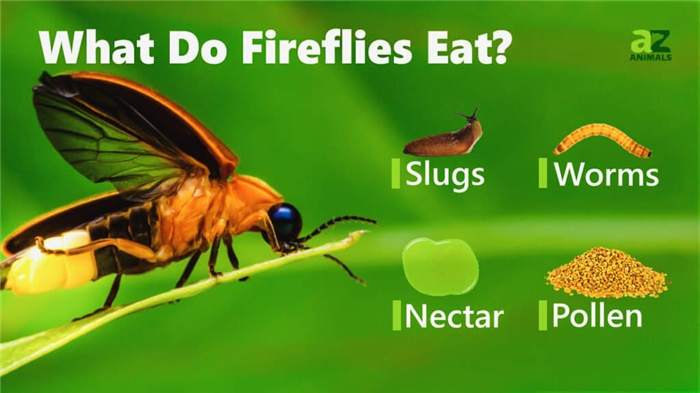
Fireflies eat different foods depending on their life stage, eating more animal products as larvae and more nectar and pollen as adults.
The food that fireflies like to eat varies depending on the species and the lifecycle stage that a firefly is in. In the larval stage, also known as the infant stage, fireflies are predominantly carnivorous. As larvae, fireflies live on soft-bodied animals and insects, including dead animals. Meanwhile, adult fireflies eat a wildly different diet. Adult fireflies eat very sparingly, with most living on nectar or pollen, while others don’t eat anything. That said, some firefly species do prey on other insects. Additionally, a number of firefly species prey on other fireflies. This cannibalistic behavior is exhibited both by larvae as well as females that prey on potential mates. Given this variance, it’s inaccurate to say that all fireflies like the same foods. Still, we’ve narrowed down the list of foods that fireflies like to 9 common entries. The 9 foods that fireflies generally like to eat include:
- Insects
- Worms
- Snails
- Slugs
- Carrion
- Other fireflies
- Larvae
- Nectar
- Pollen
How Do Fireflies Hunt and Forage For Food?
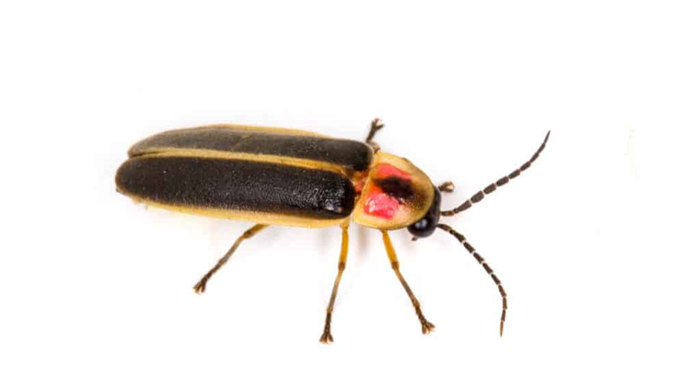
Fireflyies inject their prey with digestive enzymes to break down their bodies for easier eating.
Elliotte Rusty Harold/Shutterstock.com
Fireflies belong to the beetle order and possess many of the same attributes as other beetle species. As such, they rely on their various senses to locate and hunt for food. Beetles such as fireflies possess compound eyes which are well adapted to detecting movement. This allows them to track their prey, which is especially helpful during the larval stage when fireflies do most of their eating. That said, they also rely on their eyesight in the adult stage, when they must identify other fireflies or hunt for insects. Additionally, fireflies possess a keen sense of smell and taste. With their antennae, they detect chemical compounds in the air and the environment around them. This allows them to locate food from far away, particularly food that they are not able to see or can’t see well. This combination of sight and smell is usually all a firefly needs to find a meal.
Fireflies employ different tactics to find food depending on their lifecycle stage and species. In their larval form, fireflies are voracious hunters, and will actively stalk their prey. Upon finding its target, the firefly larva will inject its prey with a paralyzing neurotoxin. This neurotoxin is filled with digestive enzymes that break down the prey’s body, thereby making it easier to eat. Meanwhile, some adult fireflies employ different tactics to find food. For example, the females of some firefly species will raid the webs of spiders and steal their food. Additionally, some female fireflies will lure in potential mates by flashing lighting patterns used by other firefly species. Once the unsuspecting male is lured in, the female will then feast upon the male. Finally, most adult firefly species live off of nectar and pollen, or nothing at all. When not mating, these fireflies fly from plant to plant to forage.
What Do Fireflies Eat in the Wild?
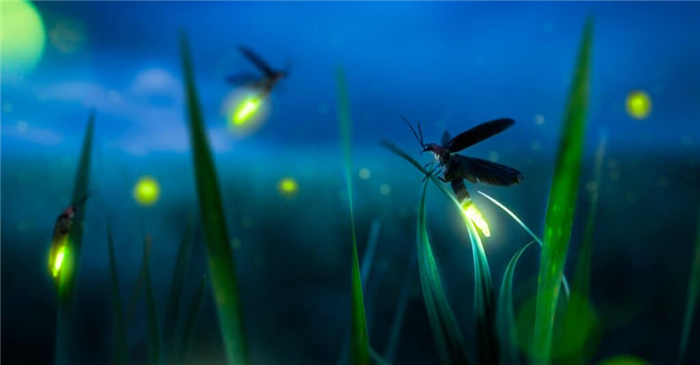
As adults, most fireflies eat only nectar or pollen, while some do not eat at all.
Fireflies spend the majority of their lives as larvae, and as a result, do most of their feeding in the larval stage. Upon reaching sexual maturity, many species severely cut back on their feeding, and most change their diet entirely. The goal of adulthood is to mate and create offspring, so feeding falls by the wayside. As a result, most adult fireflies only eat as much food as necessary in order to survive long enough to mate. In the wild, adult fireflies mostly live off of nectar or pollen. They prefer to visit plants with sweet nectar such as flowers and other more sugar-rich plant foods. Fireflies still require water to live, which they mostly get from the dew that collects on plants. On the other hand, some fireflies will prey on other insects, including other fireflies. Generally, these fireflies tend to target smaller insects, which are easier to subdue.
What Do Captive Fireflies Eat?
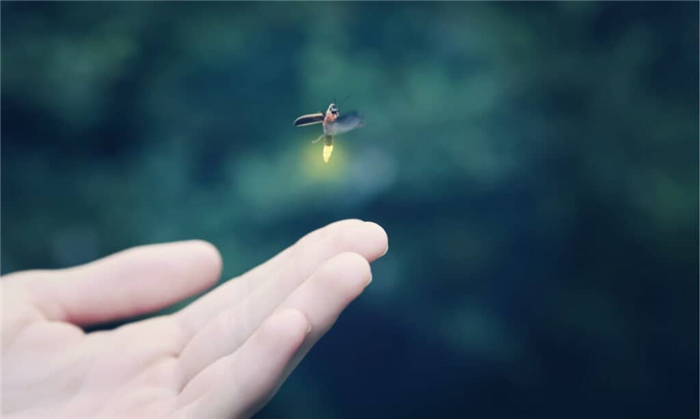
You can feed your captive firefly sugar water and flowers.
Many people enjoy watching fireflies, so it’s no small wonder that some people take it a step further and keep captive fireflies. If you decide to keep a pet firefly, you’ll need to know what to feed it in order to keep it alive for as long as possible. In addition to water, you’ll want to make sure your firefly has access to a nectar substitute. Sugar water is usually a decent replacement for wild nectar. You can also feed your pet firefly flowers, as it may collect the nectar and pollen from these natural sources. Depending on the species, you may also provide it with insects and soft-bodied animals such as slugs, worms, and snails. Just make sure to replace its food regularly and monitor its feeding habits.
What Do Baby Fireflies Eat?
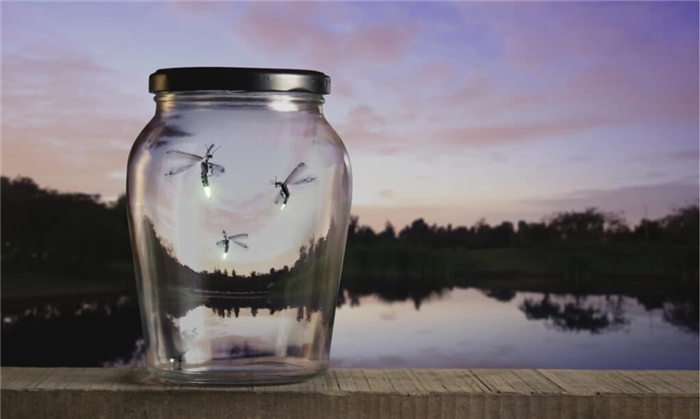
Firefly larvae mostly eat soft-bodied animals such as snails, slugs, and worms.
Like other beetles, fireflies go through four life cycles. These include egg, larva, pupa, and the final adult stage. Female fireflies normally lay their eggs during mid-summer. By late summer, the eggs hatch, and the firefly infants, or larvae, emerge. Fireflies spend most of their lives in the larval stage. This is also the stage where fireflies will do most of their eating. They need to eat plenty of food in order to grow and eventually evolve into the pupal and adult stages. In the larval stage, fireflies eat a carnivorous diet. Their diet consists mostly of grubs, worms, snails, and slugs. That said, firefly larvae will also eat other larvae and carrion.
What to Know About Lightning Bugs
Lightning bugs, more commonly known as fireflies, are winged beetles that produce luminous effects. These bugs have 2,000 about species worldwide, with more than 150 present in the United States. The Great Lakes area alone has about two dozen lightning bug species.
Wisconsin sees a massive light show of fireflies in June, July, and August. These bugs are seen as a sign of romanticism.
Lightning bugs are found primarily in moderate and tropical regions. They generally don’t bite humans, so these bugs are harmless.
What is a Lightning Bug?
Lightning bugs are not actually bugs or flies, but they are beetles from the Lampyridae family. Firefly is a common name used for these luminous insects.
North America hosts around 23 genera and 200 species of lightning bugs. They can be present in tropical as well as subtropical areas. In the U.S., fireflies are usually rare west of Kansas.
These flying insects don’t have hard forewings (elytra) like many beetles. Their elytra are more flexible and soft.
The adult lightning bugs rest in the daytime and come out around dusk or midnight. Female fireflies mostly lay eggs in damp places in the soil. The larvae stay in the ground throughout winter and then pupate in spring.
Some lightning bugs are carnivorous. Their larvae feed on slugs, worms, and snails by injecting their chemicals into their prey. Adult fireflies eat pollen, other lightning bugs, or nectar to survive. Some surprisingly don’t eat anything at all.
What Do Lightning Bugs Look Like?
Lightning bugs are luminous flies with wings, but some female fireflies are wingless. They are about one inch long. People more commonly call them glow worms due to their highly-efficient glowing ability.
Male and female fireflies create reddish-orange to greenish-yellow light. These light-producing organs are present under their abdomens. They produce cold light as there is no heat produced in the process.
The light intensity and pattern may vary from one species to another. Some species may also flash at the same time. You can easily identify males and females due to these flashes.
Male fireflies use flashes to signal females for mating.
Where Do Lightning Bugs Live?
Lightning bugs usually live in temperate and tropical areas in every corner of the world except Antarctica.
They can be found in parks, gardens, wooded areas, and meadows in the evening and night. There is no specific habitat for fireflies as they are scattered everywhere.
Can Lightning Bugs Bite?
Lightning bugs don’t have pincers, so they can’t bite. These insects don’t transfer any disease to humans and are harmless. They don’t fly as fast as other flies or insects.
Larvae of fireflies are predators. They attack other insects, such as snails and slugs, and their larvae to survive. Larvae of some species also feed on earthworms. In some species, adults can also be predatory.
Lightning bugs contain two special chemicals, luciferase and luciferin. These are usually used in cancer, cystic fibrosis, and cardiac disease research. Some species of fireflies can also release defensive steroids known as lucibufagins.
So are lightning bugs poisonous? Yes, fireflies can be poisonous to their predators. Lucibufagins are toxic chemicals that some animals release when they are in danger.
Fireflies having lucibufagins usually build a powerful defense against several predators, including bats, mice, and spiders. Not all fireflies contain these steroids.
Lightning Bug Fun Facts
Here are some interesting lightning bug facts:
Fireflies Are Not Flies
Fireflies are beetles. They are neither bugs nor flies. They belong to the Lampyridae family, a Greek name meaning “to shine.” Some fireflies glow, while others may not glow. Most of them are winged, but the females can be wingless.
Winged fireflies differentiate themselves from glowworms. But they come under the name glowworm, along with several other species.
Lightning Bugs are Very Efficient
Not all fireflies can glow. Some don’t mix oxygen with luciferin (a pigment) to produce light with little heat. This pigment works with an enzyme, luciferase, to create light in the presence of adenosine triphosphate (ATP), magnesium ions, and oxygen.
This light is super-efficient. Around 100% of the energy used in the chemical reaction turns into light, so there is no energy waste.
Fireflies use this light for synchronized flashy displays. This phenomenon more commonly happens in Southeast Asia but can also occur in Tennessee in June.
Fireflies Ward off Predators With their Light
The biggest benefit of light for fireflies is that they can use it to ward off predators. The lucibufagins make these insects distasteful to their predators. When their predators bite them, they get the taste of lucibufagins and prevent attacking those fireflies again in the future.
Firefly Flashes Are Often Considered Romantic
Each firefly species flashes differently. This pattern helps them search for potential mating partners. Male fireflies use a specific flashing pattern while flying in the air finding a female.
Many lightning bugs flash only once, while others do so around nine to 10 times. Females stay on the ground waiting for an appropriate flash display. When females are interested, they flash only one time to express their willingness. This is done in a specific way.
Some female fireflies belonging to the genus Photuris act like the females from Photinus. They do so to attract the males from the Photinus genus and kill them in the process. These females also incorporate distasteful chemicals in the Photinus fireflies.
Many Fireflies Feed on Other Fireflies
The larvae of fireflies are predatory. They feed on other insects like snails, slugs, worms, and even other fireflies for their nourishment. Adult fireflies also eat nectar and pollen to survive. The fireflies species that are carnivorous spend all their life eating other fireflies. Some even don’t eat anything at all.
Fireflies Are Becoming Extinct
Lightning bugs are unfortunately becoming extinct. Humans have created light pollution and built multiple habitats for fireflies, leading to a decline in the population of fireflies. Lightning bugs don’t relocate. They disappear when someone takes over their habitat.
People usually romanticize lightning bugs, but they contribute to their extinction every day.
Show Sources
Extension Horticulture at Texas A&M University: “Firefly/Lightning Bugs.”
National Library of Medicine: “Lucibufagins: Defensive steroids from the fireflies Photinus ignitus and P. marginellus (Coleoptera: Lampyridae)*.”
The National Wildlife Federation: “Fireflies.”
University of Wisconsin-Madison: “Fireflies (Lampyridae),” “Five things everyone should know about … Fireflies.”
A Variety of Diets
Lightning bug larvae eat snails, slugs and worms. Once they find their prey, they inject them with a substance that immobilizes them. Several species of adult lightning bugs attempt to lure other species of lightning bugs so they can eat them. Other adult species sustain themselves with plant nectar.
According to National Geographic, lightning bugs enjoy warm, wet environments. They often live in the more humid regions of Asia and the Americas. While they may be seen seen in drier climates, it’s usually during the wetter times of the year.
